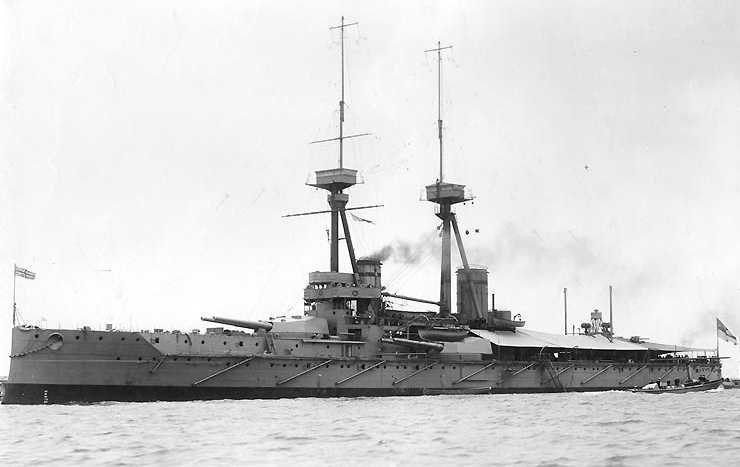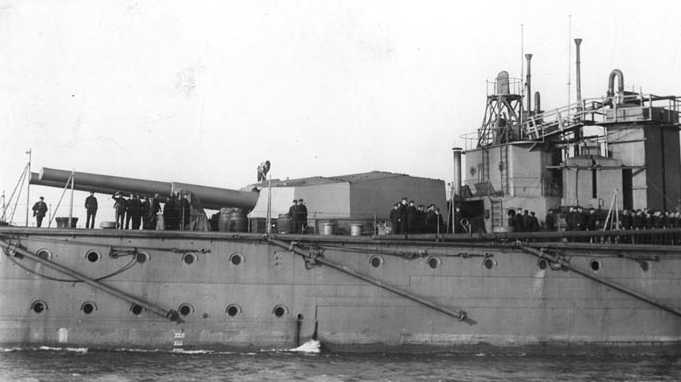|
As a result of the failure of these guns, the British implemented two significant changes. First, older ships with 12"/45 (30.5 cm) guns were modified so as to increase their maximum gun elevations. This allowed them to achieve longer ranges without increasing their muzzle velocities. Second, larger calibers were rushed into production for new ship construction, as their heavier projectiles would travel a longer distance at any given elevation for the same muzzle velocity. This meant that not only would they fire a heavier, more damaging projectile, but that they also would enjoy a longer liner life. The Marks XI, XI* and XII were interchangeable and had similar ballistic performance. The Mark XI was a Vickers design and resembled the Mark X except that the screwed collar was replaced by a breech ring screwed to the rear jacket. One of these guns used on HMS Vanguard had a Holmstrom breech mechanism while the rest used the same mechanism as the Mark X. Mark XI* had a short B hoop overlapped by the jacket and the C hoop shrunk over the B tube and screwed onto the jacket. To counterbalance this, a D hoop was added over the jacket in front of the breech ring. As a result of these modifications, the XI* weighed a ton more than the Mark XI. The Mark XII was a similar design and the same weight as the Mark XI but differed from it by having more wire along the chase. The Mark XI gun breech mechanism was powered by a 3-cylinder hydraulic motor in place of the customary piston-rack assembly. Single guns with minor differences were also made to Elswick, Beardmore and Coventry Ordnance designs. Mark XI**, XI*** and XII* were proposed variations that were to have had alterations to the chamber slope for use at high elevations, but none were ordered. A total of 85 guns of all types were made. Some experimental work for these guns was carried out with pre-rifled 12" (30.5 cm) projectiles fired at muzzle velocities exceeding 3,000 fps (914 mps) and work was begun on converting one gun to a super velocity 8.071 inch (20.5 mm) gun, known as the 8-inch (20.3 cm) subcaliber Mark II. This was a continuation of the experimental work started with the 8-inch subcaliber Mark I. The work was cancelled at the end of the war. |

HMS Vanguard before World War I
|

Stern Turret on HMS Vanguard
|